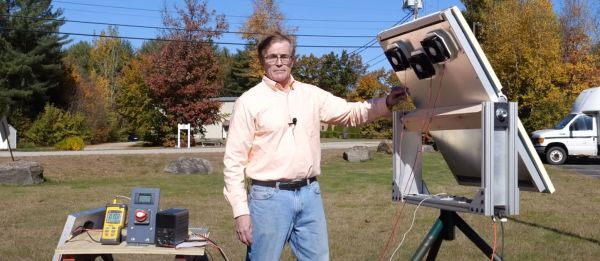An unavoidable aspect of photovoltaic (PV) solar panels is that they become less efficient when they warm up. [Tech Ingredients] explains in a new video the basic reason for this, which involves the input of thermal energy affecting the semiconductor material. In the subsequent experiment, it is demonstrated how cooling the backside of the panel affects the panel’s power output.
There are commercial solutions that use water cooling on the back of panels to draw heat away from panels, but this still leaves the issues of maintenance (including winter-proofing) and dumping the heat somewhere. One conceivable solution for the latter is to use this heat for a household’s hot water needs. In the demonstrated system a heatsink is installed on the back of the panel, with fans passing cool air over the heatsink fins.
On a 100 Watt PV panel, 10 W was lost from the panel heating up in the sun. After turning on the fans, the panel dropped over 10 °C in temperature, while regaining 5.5 W. Since the installed fans consumed about 3 W, this means that the fans cost no extra power but resulted in increased production. Not only that, but the lower temperatures will in theory extend the panel’s lifetime. Though even with active cooling, even the best of PV panels will need to be replaced after a couple decades.
Continue reading “Increasing PV Solar Cell Efficiency Through Cooling”










